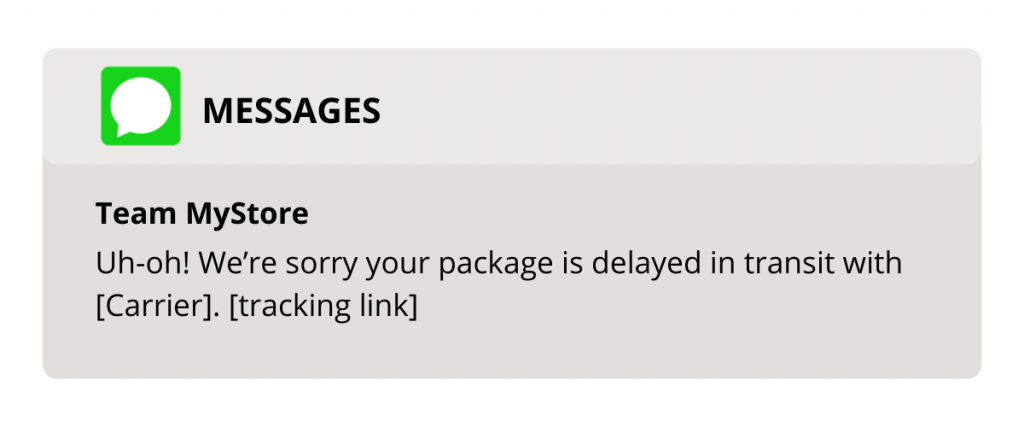Shipping delays (also known as post-pickup delays) are inevitable even with the most efficient carriers (thanks to the growing consumer demand). And when they happen, they tend to drive your customers away.
That’s not all! The worst part about them is that you do not have control over such events and often feel helpless when they happen.
Worry not! Dealing with shipping delays is no rocket science but first, we’ll start with the basics.
What Are Shipping Delays?
A package picked up by the carrier is marked as ‘shipped’. There are instances where this package gets held up before getting into transit and when that happens, the shipment is considered delayed.
While looking trivial, they can be particularly frustrating because they create a sense of uncertainty and can disrupt plans (on-time deliveries and improving customer experiences).
When delays in shipping are left unattended, they lead to late deliveries or delivery delays and can have worse consequences on your business.
Shipping delays are not only inevitable but frequent. They occur daily and it is somewhat true that they largely happen because of shipping carriers failing to keep up with their promises of on-time delivery despite their busy schedules.
But that’s not the only reason why parcels take time to reach their destination. Here are some of the other reasons why these delays happen.
Why Do Shipping Delays Occur
There are many reasons why the package is prevented from leaving the sorting facility or held by the carrier.
- Severe weather conditions
- Transportation issues like congestion, accidents, or equipment breakdowns
- Peak seasons like holidays, where huge volumes of shipments overwhelm carrier networks
- Issues within the carrier’s system, such as sorting errors, poor warehouse management, lack of coordination among the people involved, or labor shortages
- For international shipments, customs inspections and clearance processes can take a little extra time
While shipping delays might be inevitable, they sure aren’t unavoidable. With the right course of action, you can mitigate or even prevent their impact on customers and your business.
What You Can Do About Shipping Delays (You Have the Power)
There are a whole lot of things you can do to avoid shipping delays from becoming late deliveries. Assuming that a delay has already happened. Here’s what you can do:
Effective communication with customers in handling their complaints
While customers are prone to get frustrated seeing that there has been a delay with their shipment before getting into transit, that shouldn’t prevent you from hiding this detail from them. This can cause more damage as customers always expect you to keep them informed about the status of their orders and estimated delivery times.
Firstly, it’s incredibly important that you communicate with your customer. The last thing a customer would want to see is that there has been a delay in shipping, and there’s no communication from the shipper. Make the effort to get in touch with the customer and let them know of the status of the parcel.
Secondly, Apologize if you should. Don’t fall to the misconception that this is the carrier’s fault. Your customers do not feel that way and are more inclined to hold you accountable. Therefore, take ownership and explain the whole situation.

Take ownership of the situation
This is probably easier said than done, but make sure you own up and face the ire of the customer if it comes to that. There’s no way you can skirt the issue — understand the customer’s frustration
Aside from giving consistent updates such as order status information, and offering empathy along with alternative shipping options or solutions they prefer.
This will actually show you in a good light and ensure that the expectations of your brand have been exceeded (thanks to your efforts to address their concerns efficiently and follow up to ensure satisfaction).

Proactive Measures to Minimize Delays
Here’s another killer tip for you. Sign up for a service that will help you track your shipments in real-time. This will allow you to identify potential delays early on and respond to issues preemptively. Regularly tracking your shipments also allows you to identify areas for improvement, such as insights into carrier performance.
If shipping delays are a regular occurrence with your carrier, using multiple carriers for different delivery requirements may well be the way to go. Multiple carrier options while being armed with data can help you to make necessary adjustments such as better carrier choices to prevent recurrence.
Final Word
Shipping delays are an inevitable part of the logistics industry. While they can be frustrating, proactive measures, effective communication, and a customer-centric approach can significantly mitigate their impact.
By following the steps mentioned here, you can minimize the impact of shipping delays and maintain customer satisfaction. Remember, effective communication and proactive measures are key to handling these challenges successfully.








